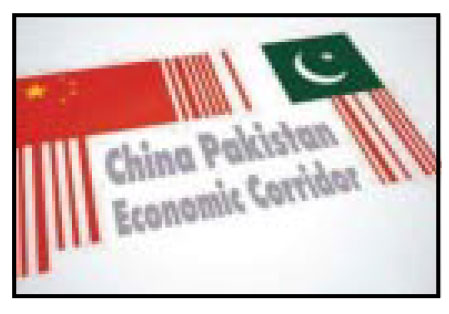STAFF REPORTER ISLAMABAD Pakistani and Chinese experts agreed to develop a textile cooperation framework under China-Pakistan Economic Corridor (CPEC) to enhance ready-made garments, man-made fiber and textile skill training, reports Gwadar Pro App. CPEC had now entered into the pragmatic phase of Industrial cooperation, and it was the right time to take Pakistan forward on the path of industrialization, said Qasim Raza Khan, executive director general of Board of Investment (BOI). The Chinese side would continue to provide intellectual and technical support to accelerate Pakistan’s priority sectors especially through the nine SEZs of Pakistan under CPEC wherein three SEZs have been prioritized and are now at an advanced stage of development, he added To deliberate on a diagnostic study on Pakistan’s textile sector, a one-day workshop was organized by the BOI and conducted by the National Development and Reform Commission (NDRC) of China and China International Engineering Consulting Corporation (CIECC). The textile diagnostic report provided the Chinese viewpoints on the potentials and barriers of large-scale textile mills in Pakistan. It was also one of the deliverables of the 9th JCC held in 2019 and a precursor to a more detailed work on the Textile Sector of Pakistan. Khan said he is confident that through this cooperation, many Chinese companies would reap benefits of Pakistan’s competitive advantages. Asim Ayub, project director of the Project Management Unit (PMU) BoI said the trade potential between the two neighboring countries had to be transformed into investment potential. He specified three main areas of cooperation where Chinese could provide support to Pakistan with the objective of developing a textile cooperation framework. These areas include ready-made garments, man-made fiber and textile skill training. Executive Director APTMA Sattar Shahid was of the view that for any meaningful investment to be made, there was a need to fix the business climate, effective contract enforcement. He proposed the need for an efficient and workable bankruptcy law, besides the tariff sector of Pakistan needed to be revisited. Chairman PRAGMEA Shaikh Mohammad Shafiq was of the perspective that large scale units of Pakistan were only 20 percent of the total while SMEs comprised of nearly 80 percent. “Majority of the concessional tariff lines involved in CPFTA-II was related to the textile sector which held a huge opportunity for Pakistan,” he added “There exists a great potential for cooperation in the value-added textile section and artificial fiber area by gaining technical expertise from the Chinese side.” The author of the Diagnostic study, Dr. Du Zhen Li, Deputy Director General of CIECC and the focal person on Joint Working Group (JWG) – Industrial cooperation (IC) from Chinese side, joined the workshop through a Videocon and shared that the textile sector of Pakistan is chosen for the study based on its significance as an important industry, prioritized by the government of Pakistan.










